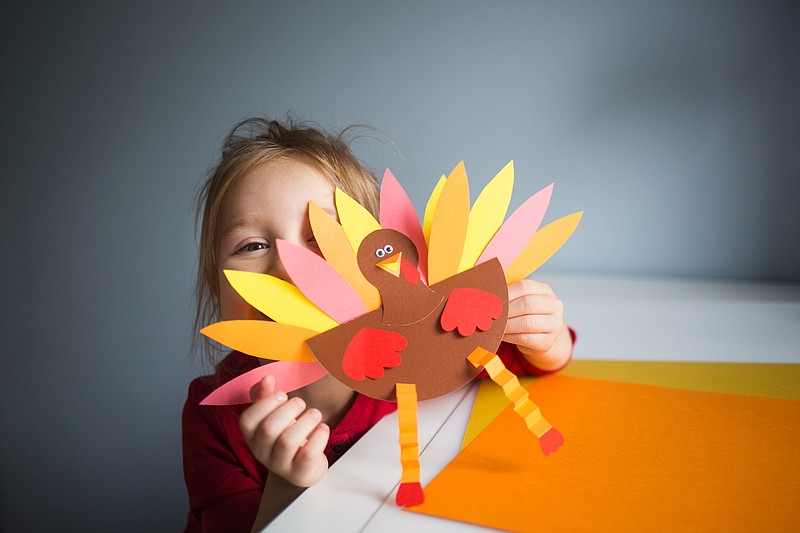We all know the story of this 400th anniversary of the "First Thanksgiving." Or at least we know the one we were taught. It's basically a romanticized movie: English Pilgrims squeeze themselves aboard the Mayflower and brave the churning Atlantic to seek religious freedom in America. They finally step off the dank ship at Plymouth Rock, kiss the ground and embark into a howling wilderness.
The Pilgrims are armed, in part, with a prototype Constitution, titled the Mayflower Compact. And they have a hopeful, somewhat arrogant confidence that they are the Lord's chosen people. Still, sickness and starvation will cut their number by half during their first winter.
The movie continues: Meanwhile, (and to quote historian and George Washington University Professor David J. Silverman) "the neighboring Indians ... with whom the English desperately wish to trade for food, keep a wary distance. Just when Plymouth seems destined to become another lost colony, miraculously, the Natives make contact through interpreters Samoset and Squanto ... . Over the spring and summer, the Indians feed the Pilgrims and teach them how to plant corn; the colony begins to thrive. In the fall, the two parties seal their friendship [and new alliance] with the first Thanksgiving. The subsequent 50-year peace allows colonial New England and, by extension, the United States to become a citadel of freedom, democracy, Christianity and plenty."
Curtains!
Or, at least, colonization curtains for the Indians. Specifically, the "people of the first light," the Wampanoags (pronounced waam·puh·NOW·ags), who lived in their own country full of villages, roads, cornfields, monuments, cemeteries and forests cleared of underbrush.
"Generations of Native people had made it that way with the expectation of passing along their land to their descendants," Silverman wrote in a Nov. 27, 2019, commentary in The New York Times.
But the darker part of that first Thanksgiving history didn't make the cut in what we all were taught as grade-schoolers while we cut and folded our construction-paper turkeys. In our "patriotic history" we did not learn this wasn't a first encounter. We weren't clued in to the reality that the heart-warming Thanksgiving story was really an early American continuation of ugly political moves aimed at power - political moves from the Puritans, from the Wampanoags and from other European explorers who perpetrated their own exploitation.
That first Thanksgiving followed a string of bloody episodes beginning almost 100 years earlier, when European explorers seized coastal Wampanoags to be sold into overseas slavery or to be trained as interpreters and guides. (Were you not wondering how that interpreter, Squanto, learned English? He had spent years in captivity in Spain and England before orchestrating an unlikely return home shortly before the Mayflower's arrival.)
The plot thickens.
"The Wampanoags reached out to the Pilgrims not only despite this violent history, but also partly because of it." wrote Silverman, who also authored "This Land Is Their Land: The Wampanoag Indians, Plymouth Colony, and the Troubled History of Thanksgiving."
In 1616, five years before that first Thanksgiving, a European ship brought an epidemic disease to the Wampanoags that in three years severely cut their population. Seeing opportunity, the Narragansett tribe to the west began raiding the Wampanoags. To answer the threat, their chief, Ousamequin, wanted the English to serve the Wampanoags as military allies and as a source of European weapons. For years after, Ousamequin threatened rivals in and outside his tribe with violence from his English allies.
Who knew? There were American arms trades, vicious slavery and naked power grabs even before the first Thanksgiving!
OK, all this may be a bit too dark for American grade school craft periods. But it's certainly not too dark for middle and high schoolers who cut their teeth on Grand Theft Auto and Call of Duty video games.
The trick might be, however, in fending off the ban-the-book squads, whipped up now about "critical race theory" and conversation about righting our own Southern history books' whitewash of African-American slavery, the "the Lost Cause," and the gruesome Trail of Tears to remove "savages." In the Cherokees' case, the reality was that gold discovered on tribal land in North Georgia meant the native people who had assimulated so well into American culture - complete with owning cabins, plantations and even their own slaves - would be rounded up right here in Chattanooga and marched to Oklahoma.
The "myth" about the Pilgrim-Indian alliance at Plymouth further "distorts history by highlighting the alliance while ignoring its deterioration," Silverman wrote.
After Ousamequin's death in 1660, the English and the Wampanoags wobbled on the edge of war because of the colonists' "aggressive, underhanded expansion." Then came King Philip's War of 1675-76, when the English killed thousands of native people - including Ousamequin's son - and enslaved thousands more.
Certainly our first Thanksgiving wasn't our first foray into "patriotic history." But we should work to make it among the last.
We have to get these stories straight.
Our kids are far more resilient than we think, and the worst discomfort we can create for them is the eventual, painful realization that we failed to tell them the truth.
If we teach youngsters - and ourselves, belatedly - to think critically about our country's past and present, our future will be better for it.
